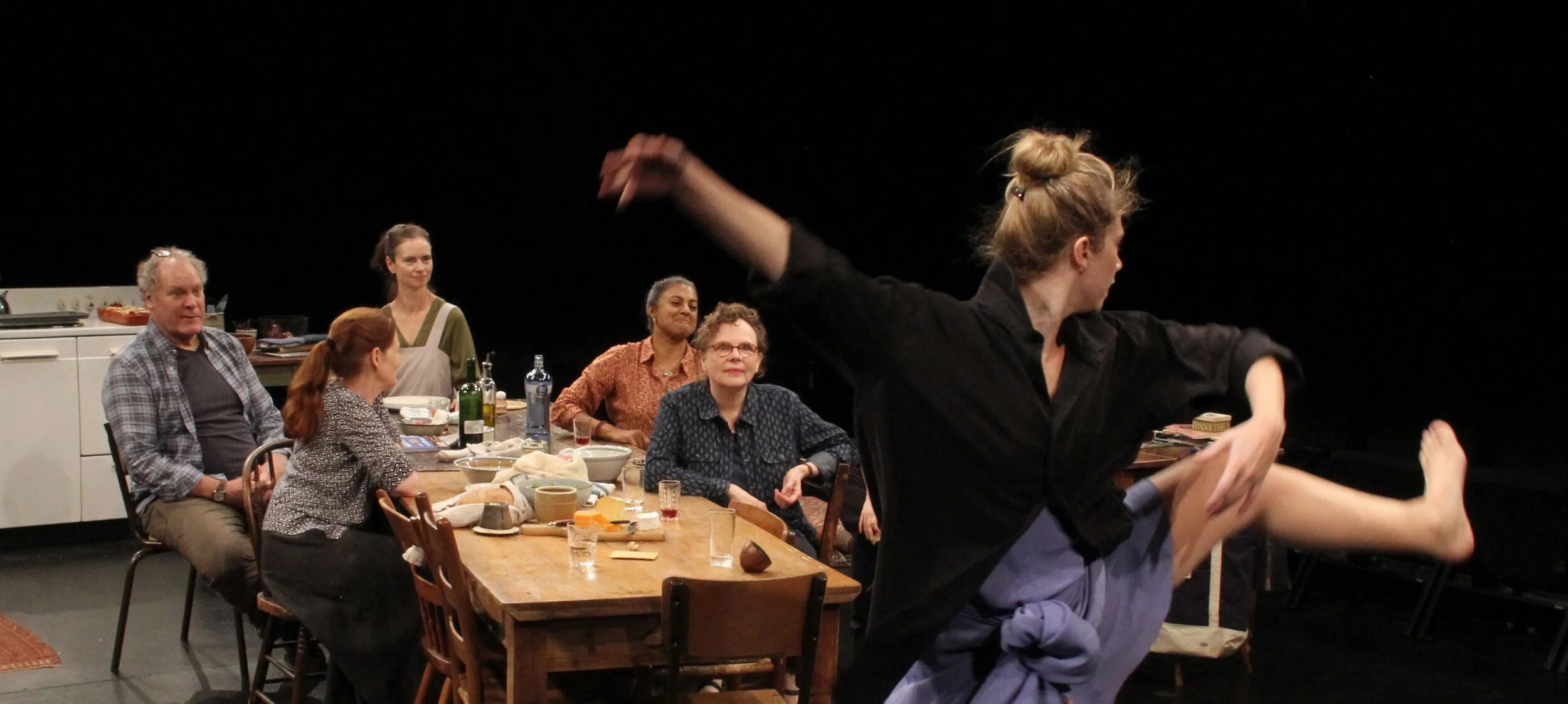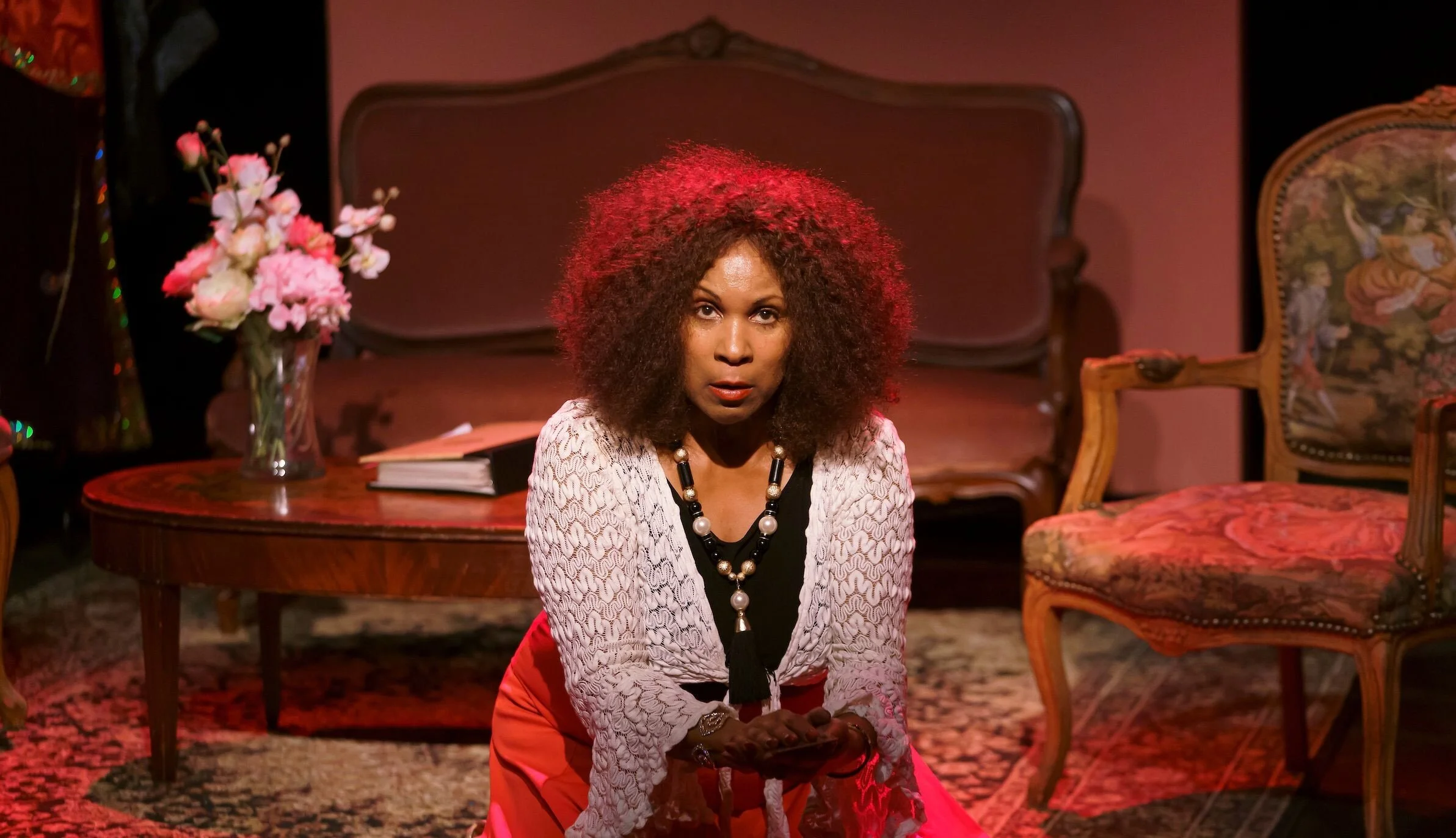Paul Osborn’s play Morning’s At Seven is one of theater’s great rescues. A flop on Broadway in 1939, it was resurrected in 1980 by director Vivian Matalon, whose peerless production established it as a classic piece of Americana. It’s a gentle satire on small-town life, with busybodies and petty jealousies and snobbery, and although it’s as sturdily constructed as a Chekhov play, it’s not as dark. There may be conflicts, but the characters have more fun—and are fun to be around.
Autumn Royal
There’s a moment early in Kevin Barry’s darkly comic Autumn Royal, currently running at the Irish Rep under the direction of Ciarán O’Reilly, when siblings May (Maeve Higgins) and Timmy (John Keating), both in their 30s in Cork city, Ireland, realize that the current predicament of caring for their psychotic, decrepit, slowly dying father might have no end in sight.
Brecht on Brecht
German poet and playwright Bertolt Brecht (1898-1956) was a world traveler—not by choice, but by conviction. His larger-than-life, highly controversial career caused him to flee Nazism and take refuge in several countries before he was granted permission to settle in the United States. The Theater Breaking Through Barriers (TBTB) production of Brecht on Brecht tracks the playwright’s odyssey using his songs and writings, which include The Threepenny Opera, The Life of Galileo, and Mother Courage and Her Children.
Chasing Jack
Chasing Jack, by John S. Anastasi, is the story of a man willing to lose it all for the thrill of throwing the die. Dr. Jack Chase (played with boundless energy by Emanuele Secci) is a tireless cardiac surgeon who appears selfless but has one too many skeletons in the closet. The biggest one—a gambling addiction—can no longer remain hidden, and, after losing a patient, he finds himself in court.
Sanctuary City
The programs handed out at Martyna Majok’s Sanctuary City, produced by New York Theatre Workshop and presented at the Lucille Lortel Theatre, note that they have been “frozen in time”: they were printed for the play’s original run, which began in March 2020, and are now accompanied by a QR code providing updated information. This new information includes a remount director, Caitlin Sullivan, in addition to the original direction by Rebecca Frecknall.
What Happened?: The Michaels Abroad
It finally dawned on me that theater was back in New York City when I was once again in the presence of characters in a Richard Nelson play as they sliced bread, grated cheese, sipped wine, and had conversations that made you feel like an eavesdropper more than an audience member.
Charmed Life: From Soul Singing to Opera Star
Many an autobiographical solo show has been born from hardship— growing up closeted, say, or having an intolerable job, or living through a war. Lori Brown Mirabal’s jumping-off point is the complete opposite. It’s right there in her show’s title, Charmed Life: From Soul Singing to Opera Star.
Fruma-Sarah (Waiting in the Wings)
In Fruma-Sarah (Waiting in the Wings), the multitalented Jackie Hoffman portrays Ariana Russo, a barely talented amateur actor who is literally and figuratively at the end of her rope. Stuck in the minor role of the ghostly and ghastly Fruma-Sarah, in a community theater staging of Fiddler on the Roof in Roselle Park, N.J., she must spend the first “hour and seven minutes” of the show offstage, strapped in her flying harness and waiting for her cue to soar.
Voyeur: The Windows of Toulouse-Lautrec
Voyeur: The Windows of Toulouse-Lautrec explores the life of Henri de Toulouse-Lautrec, the immensely talented 19th-century French painter and printmaker, using the sidewalks, doorways, and windows of Greenwich Village as the setting for a “pandemic-friendly theatrical experience.” Live performance, puppetry, music and a short black-and-white film combine to help the site-specific production tell the story of the artist who captured the seamier side of the Belle Époque.
The Siblings Play
In mid-March, as the novel human coronavirus steamrolled New York City, Rattlestick Playwrights Theater had to pull the plug on Ren Dara Santiago’s The Siblings Play. The production, directed by Jenna Worsham, was nearing the end of previews, with four days to go before opening night.
About Love
Jazz artist Nancy Harrow is one of the New York music world’s greatest, though woefully underappreciated, treasures. During the Kennedy and Johnson eras, she was a regular on New York City’s cabaret circuit, singing with figures such as Kenny Barron, Bob Brookmeyer, and Jim Hall. Back then, Village Voice critic Nat Hentoff wrote: “Nancy Harrow is not jazz-influenced or jazz-tinged or jazz-pollinated. She is without qualification a jazz singer all the way.”
Mr. Toole
The title character in Vivian Neuwirth’s Mr. Toole is John Kennedy Toole, author of the 1981 Pulitzer Prize novel A Confederacy of Dunces. Known as “Ken” to family and friends, Toole died in 1969, more than a decade before his book was published. Neuwirth knew Toole when she was a student at St. Mary’s Dominican High School in New Orleans, where he taught English. “He was,” she says, “an amazing teacher” with a “theatrical flair.”
Sideways
When writer Rex Pickett was trying to get his novel Sideways published, he submitted it to film studios as well as book publishers. He has now adapted the novel as a play, but the story’s cinematic nature works against it on stage. Because there are so many scene changes, scenery is simplified to tables and chairs (and the occasional counter or bed) that can be hastily reconfigured to represent various homes, bars, restaurants and outdoor locales. But Sideways has such a strong sense of place—the Oscar-winning 2004 movie fueled a tourism boom for California’s Santa Ynez Valley, and a map of film locations is still available on the Santa Barbara visitors bureau website—that it’s shortchanged by many scenes looking similar and the same backdrop, a lone tree, remaining for the entire play. What scenic designer David L. Arsenault has created is okay (the multiple levels and a faux hot tub work well); it’s just not enough to evoke the landscapes and idea of traveling.
Suicide Forest
The challenges are as great as the rewards in Haruna Lee’s Suicide Forest, a tortured, weird, and very personal fantasy that includes passages spoken in Japanese, bouts of simulated schoolgirl molestation, and a lengthy scene in near darkness with characters dressed as goats and wearing headlamps. But those willing to go along on this guilt trip, skillfully guided by director Aya Ogawa, will be find unexpectedly beautiful moments of theatricality and an ending that pivots from madness to reality with the force of an emergency brake being thrown on a speeding train.
A Sign of the Times
The solo play A Sign of the Times stars Javier Muñoz as a former physics professor who now works as a traffic controller near a construction site. Sounds of vehicles zooming past, slowing down or screeching to a halt are heard frequently, and Muñoz occasionally speaks with their unseen drivers.
Blues for an Alabama Sky
Blues for an Alabama Sky, by Pearl Michelle Cleage, has been around for 25 years, but only now has the Keen Company given it a New York debut. Still, Cleage’s work, about black artists struggling in 1930, during the Harlem Renaissance, is as relevant today as it was a quarter-century ago. Poverty, discrimination, abortion rights, violence, and the everyday hustle to make it are still real issues in 2020.
Rules of Desire
Rules of Desire is the first new play by William Mastrosimone (Extremities) to premiere in New York in some time. And this 90-minute, three-character piece, directed by William Roudebush, is a head-scratcher: Whatever points it makes get muddled by ambiguous character development, a far-fetched setup and one long scene that gives new meaning to “toxic masculinity.”
Fandango for Butterflies (and Coyotes)
Fandango for Butterflies (and Coyotes) is a lively new play by Andrea Thome that presents stories of immigration and fear from Latino immigrants in New York City. Filled with music and dance, Fandango lightens the darkness of its topic without soft-pedaling it.
Frankenstein
Tristan Bernays’s adaptation of Mary Shelley’s Frankenstein, directed by Timothy Douglas and playing in repertory with Kate Hamill’s adaptation of Dracula at Classic Stage Company, is a strange hybrid of the ploddingly literal and the vaguely conceptual. Its pleasures lie in listening to Stephanie Berry, who plays both Victor Frankenstein and “the Creature,” recite long passages of beautiful prose. But as a piece of theater, it is a flat, almost somnolent experience, and one that doesn’t seem to say anything new or urgent about the story.
Miss America’s Ugly Daughter
The life of Bess Myerson, the only Jewish woman to have won the Miss America title, in 1945, was two sides of a coin: the face was that of a very beautiful, proud, and successful woman, but her private life involved difficult relationships, most notably with her daughter, Barbara (Barra) Grant. Their mother-daughter interaction, and Bess’s attempts to create her daughter in her own image, are the center of Grant’s solo play/memoir Miss America’s Ugly Daughter. The audience never sees the subject, but she is sometimes heard offstage, her voice (by Anna Holbrook) always booming and intruding in her child’s life.
























